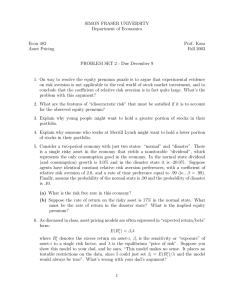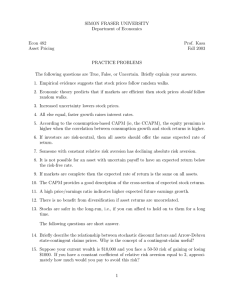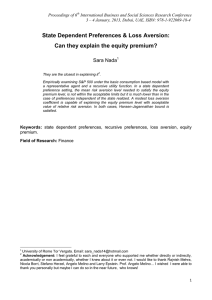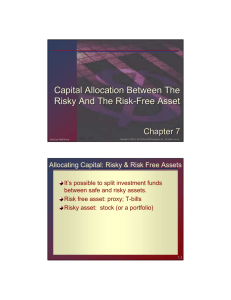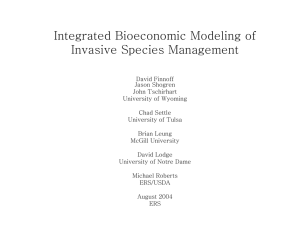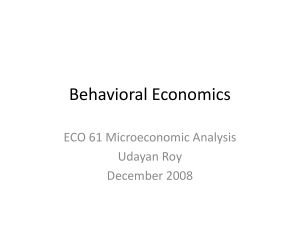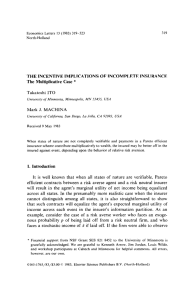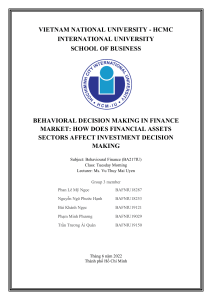SIMON FRASER UNIVERSITY Department of Economics Econ 815 Prof. Kasa
advertisement
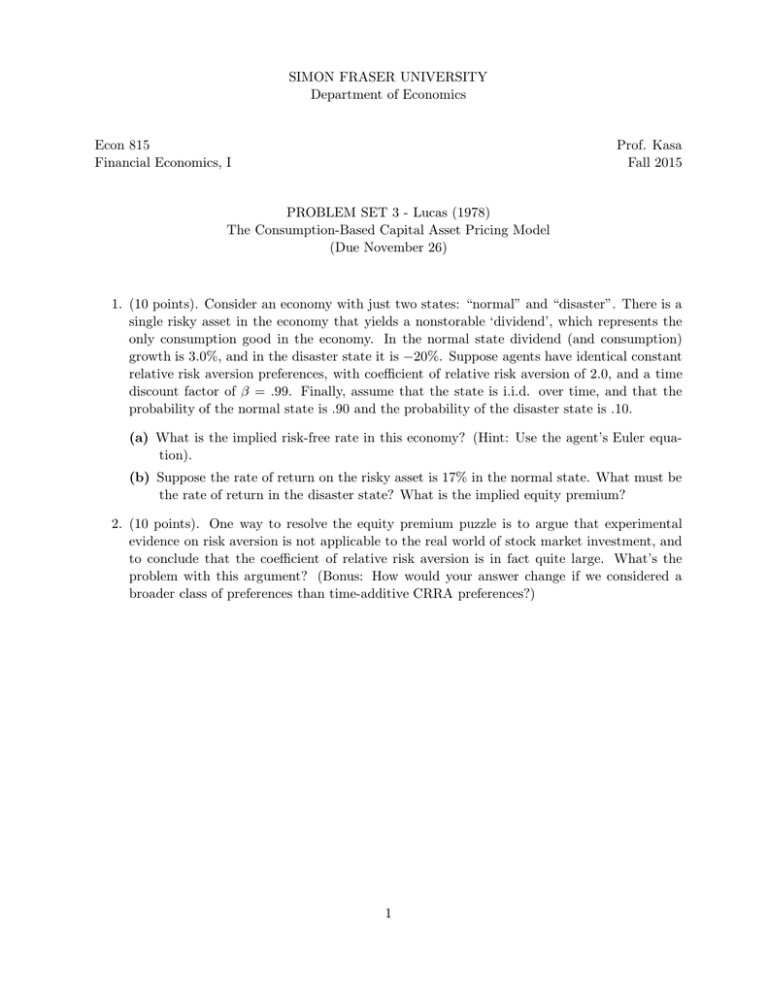
SIMON FRASER UNIVERSITY Department of Economics Econ 815 Financial Economics, I Prof. Kasa Fall 2015 PROBLEM SET 3 - Lucas (1978) The Consumption-Based Capital Asset Pricing Model (Due November 26) 1. (10 points). Consider an economy with just two states: “normal” and “disaster”. There is a single risky asset in the economy that yields a nonstorable ‘dividend’, which represents the only consumption good in the economy. In the normal state dividend (and consumption) growth is 3.0%, and in the disaster state it is −20%. Suppose agents have identical constant relative risk aversion preferences, with coefficient of relative risk aversion of 2.0, and a time discount factor of β = .99. Finally, assume that the state is i.i.d. over time, and that the probability of the normal state is .90 and the probability of the disaster state is .10. (a) What is the implied risk-free rate in this economy? (Hint: Use the agent’s Euler equation). (b) Suppose the rate of return on the risky asset is 17% in the normal state. What must be the rate of return in the disaster state? What is the implied equity premium? 2. (10 points). One way to resolve the equity premium puzzle is to argue that experimental evidence on risk aversion is not applicable to the real world of stock market investment, and to conclude that the coefficient of relative risk aversion is in fact quite large. What’s the problem with this argument? (Bonus: How would your answer change if we considered a broader class of preferences than time-additive CRRA preferences?) 1
